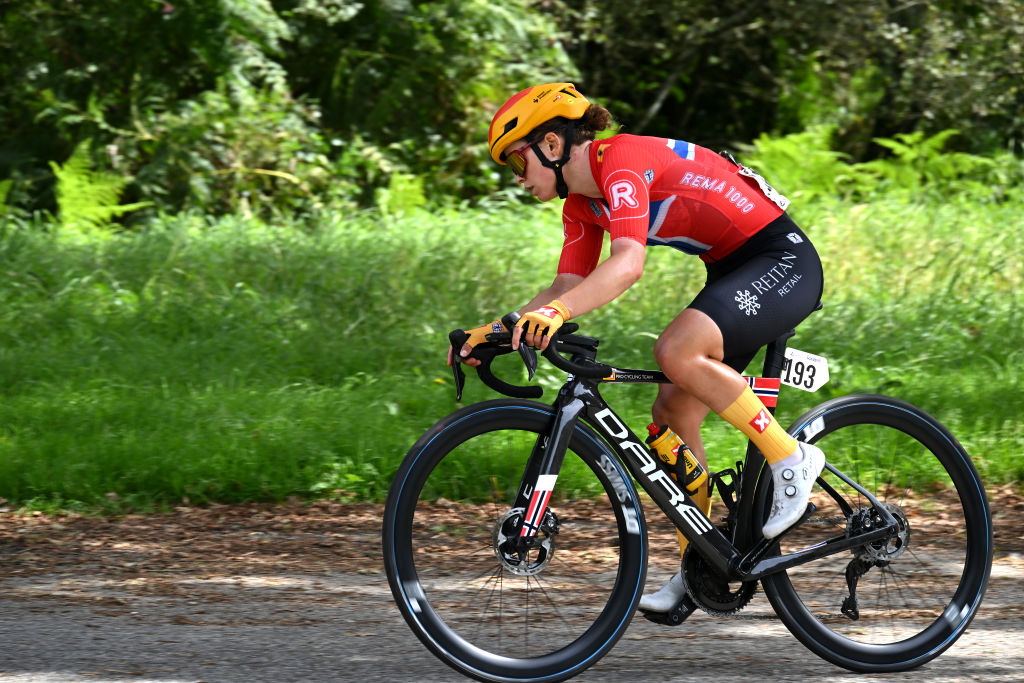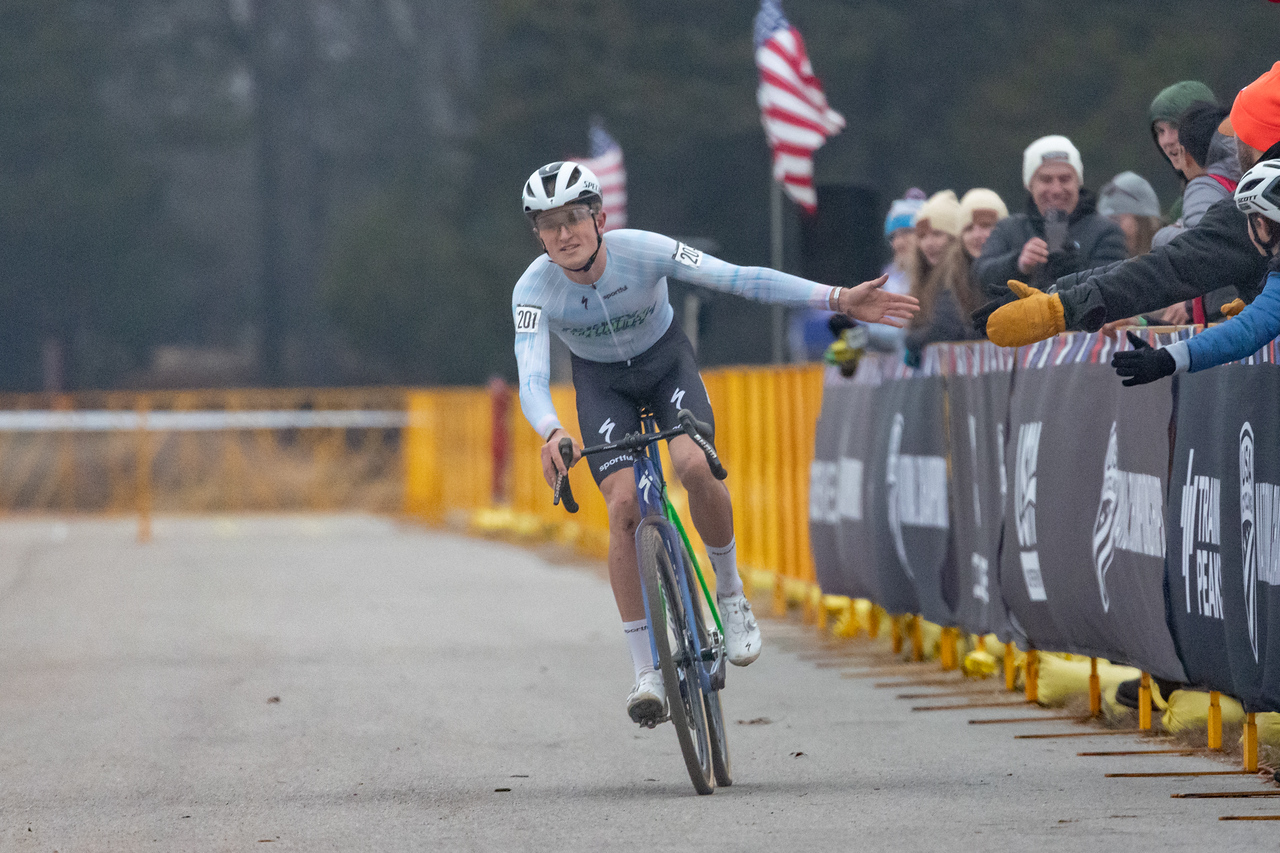‘If you never try, you never know,’ says Andersen about Brittany breakaway
Norwegian champion animates Classic Lorient Agglomération with long escape

Almost right after the start of the Classic Lorient Agglomération - Trophée Ceratizit, Norwegian champion Susanne Andersen (Uno-X) went on the attack. Her move initiated the break of the day, and she was only caught ten kilometres from the finish line.
“Part of the goal was to be in front of the first selections, as I was a bit unsure about my shape coming back from sickness. And of course, if you never try, you never know,” Andersen told Cyclingnews, confirming the attacking mindset she showed with breakaways in the Giro d’Italia Donne.
Franziska Brauße (Ceratizit-WNT) and Karolina Kumięga (UAE Team ADQ) were Andersen’s two companions on the roads of Brittany, and together they built an advantage of 6:30 minutes on the peloton.
“I was hoping a bigger group would go. I didn’t attack very hard, just hoping to get the race started and some more attacks going so we could get a good group. Only being three was not ideal but I’m very happy they were all motivated to increase the gap, and when we had more than 6 minutes, I understood it would last until the final of the race,” the 23-year-old said.
Halfway through the race, the climbs began to get longer and harder, and Brauße could no longer follow the others’ pace.
“We weren’t riding the climbs that fast when she started dropping and there were still lots of climbs to come, so unfortunately, we had to leave her behind. It’s a difficult balance because more riders are better on the flats, but in this race, there isn’t much flat,” Andersen recounted why she and Kumięga did not wait for the German.
The two remaining frontrunners held onto a three-minute advantage to the two-and-a-half laps of the finishing circuit, in no small part due to Andersen calculating the pace necessary to keep a gap and pushing hard on the climbs, leaving Kumięga behind on the penultimate lap, too.
The latest race content, interviews, features, reviews and expert buying guides, direct to your inbox!
“I was trying to balance the whole day how fast we should pace the climbs because I thought that’s where the bunch will gain the most time. In the final of the race, you have to start riding the climbs faster because they will race in the back. I did not want to drop her, I just tried to keep a steady hard pace to not lose too much time. It wasn’t ideal because I could really use another rider in the headwind, but when the motorbike said it was already 25 seconds over the top, I felt the right thing was to continue,” she said.
In the final, Andersen did begin to think about every breakaway rider’s dream of actually winning the race – knowing full well that it was a remote possibility but trying to make her own luck in the hope that the race behind would be split up when she was caught.
“When it was still three minutes with 25 km to go, I started believing that maybe we’d be riding for victory, but I just tried to focus on doing the right things. I also thought if I was caught at a good moment I could still be in contention for the win. However, I expected that there would be bigger splits and a harder race in the back so that it would be an even more selective group,” Andersen explained.
As it was, there were still more than 50 riders in the peloton when she was caught, and the hard attacks afterwards saw Andersen lose contact with the front group, eventually finishing in 40th place.
Lukas Knöfler started working in cycling communications in 2013 and has seen the inside of the scene from many angles. Having worked as press officer for teams and races and written for several online and print publications, he has been Cyclingnews’ Women’s WorldTour correspondent since 2018.
